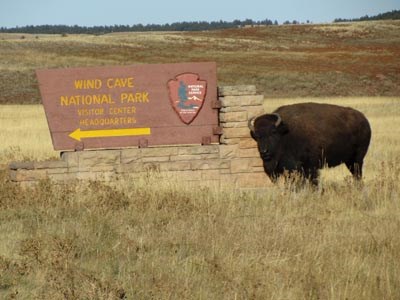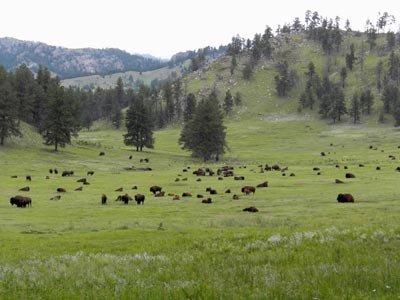Last updated: November 2, 2017
Article
Bison Bellows: Wind Cave National Park - Riding the Rails Back Home

Photo courtesy of Greg Schroeder
Before the mid-1800s, bison dotted the South Dakota plains. But by the late 1800s, South Dakota resembled a bleak wildlife landscape. The wild free roaming bison were gone and so were the elk, the pronghorn, other wildlife, and the people that once roamed freely across the plains. By the beginning of the 20th century, some efforts were underway locally to restore prairie wildlife; yet, it wasn't until people on the east coast gathered together to create the New York Zoological Society in 1905 and its subdivision of the American Bison Society, that bison conservation actually began to have a home.
In 1913, the New York Zoological Society had raised sufficient numbers of bison that they could imagine doing something that had never been done before. They proposed a new vision of conservation partnership between private and public entities, in order to donate and restore bison to Wind Cave National Park nestled in the South Dakota Black Hills landscape. In November, 1913, 14 bison departed New York City by train for the long trip westward back home to Hot Springs, South Dakota and then by wagon to Wind Cave National Park. This cross-country movement of bison, from private possession to public lands, represented a major milestone in wildlife conservation.

Photo courtesy of Greg Schroeder
Deliberate conservation of wildlife can sometimes seem in hindsight ironic. Think about it. The same train lines that brought people from east to west to shoot bison towards extinction and were then used to ship bison hides and body parts back east for industrial purposes. They became critical in support of bison returning from the east to their western homeland a half a century later. It is interesting to visualize enthusiastic crowds gathering at train stations to see the 14 bison from New York City heading home westward. It may be that some of those communities included people who earlier rode the same rails westward in order to decimate wild bison. The story of bison restoration at Wind Cave National Park is one of remarkable change in societal intent and perception, and one of how a small yet determined society can transform the attitude of a nation.
Although bison suffered an unnatural and traumatic population decline, the Wind Cave bison herd now serves as a foundation for future conservation. Those 14 bison in 1913 were the beginning of over a century of bison conservation at Wind Cave National Park; have served as a source of bison to reestablish other herds across the United States and most recently in Mexico; and have brought delight and inspiration of millions of park visitors and supporters of the National Park Service.
Did you know?
According to the Lakota people, Wind Cave is the place from which Wakan Tanka, or the Great Mystery, sent bison to the Sioux hunting grounds through a person, known as the buffalo woman, who ascended from Wind Cave to give the Lakota people bison.
